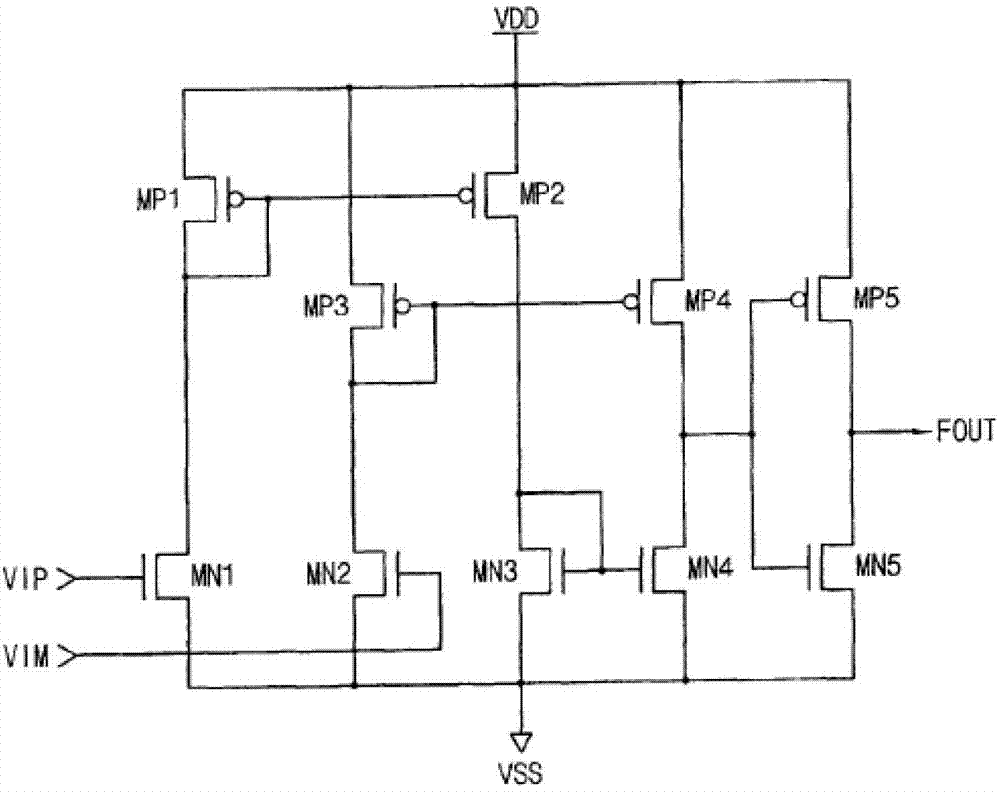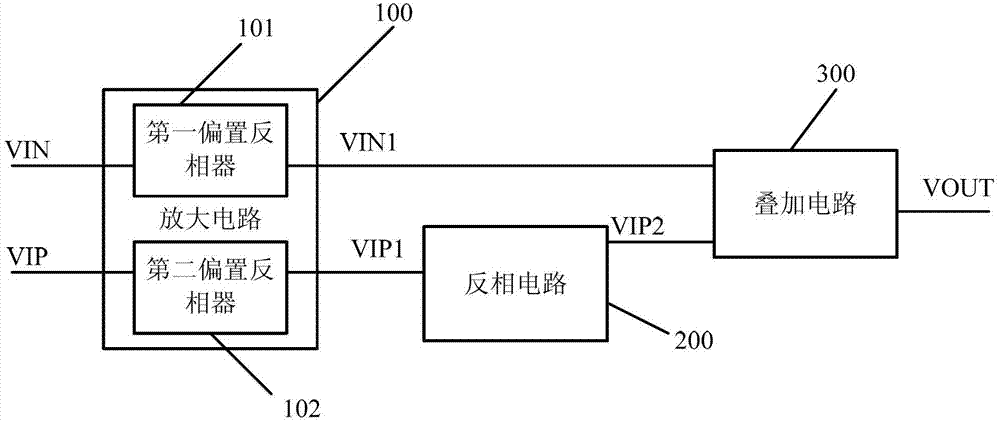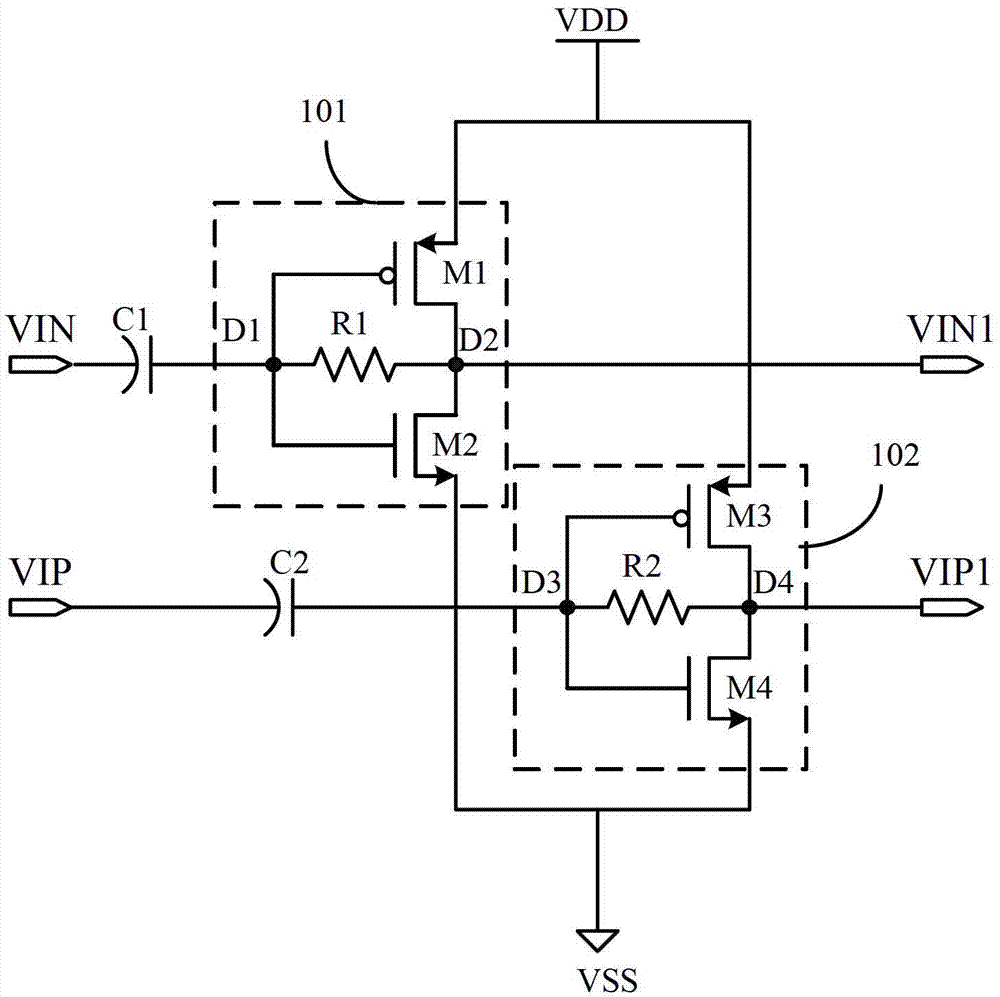Differential to single-ended convertor
A converter, single-ended technology, applied in the field of differential to single-ended converters, can solve the problems of high power consumption, inability to use radio frequency circuits, limited application range, etc., and achieve large-scale effects
- Summary
- Abstract
- Description
- Claims
- Application Information
AI Technical Summary
Problems solved by technology
Method used
Image
Examples
Embodiment Construction
[0026] As mentioned in the background, the conventional differential-to-single-ended converter consumes too much power under high-frequency conditions, and the amplitude of the output signal is low, so it cannot be used in radio frequency circuits, and its application range is limited.
[0027] For existing radio frequency circuits, as the frequency increases, the more stray capacitance and stray inductance, the greater the impact on circuit performance, so the radio frequency circuit should minimize stray capacitance and stray inductance to improve The response of the circuit, reducing the delay, and reducing the power consumption in the radio frequency circuit; wherein the stray inductance exists in the wires in the circuit and the self-inductance in the device, and the stray capacitance exists in the parasitic capacitance in the semiconductor device , and between the device and the ground, so the stray capacitance and stray inductance in the circuit cannot be avoided; it can...
PUM
 Login to View More
Login to View More Abstract
Description
Claims
Application Information
 Login to View More
Login to View More - R&D
- Intellectual Property
- Life Sciences
- Materials
- Tech Scout
- Unparalleled Data Quality
- Higher Quality Content
- 60% Fewer Hallucinations
Browse by: Latest US Patents, China's latest patents, Technical Efficacy Thesaurus, Application Domain, Technology Topic, Popular Technical Reports.
© 2025 PatSnap. All rights reserved.Legal|Privacy policy|Modern Slavery Act Transparency Statement|Sitemap|About US| Contact US: help@patsnap.com



